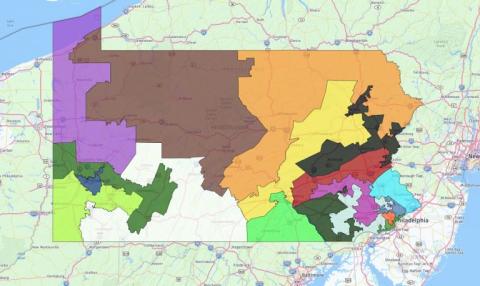Another election season, another increasingly bizarre redrawing of the electoral map. In states across the U.S., voting districts are elongated and chopped, stretched like taffy to cover certain state regions and amputated to avoid others.
All these calculations and measurements work to ensure that our democratic system of government doesn’t function the way it is intended. The process of redrawing favorable district lines — affectionately termed “gerrymandering” — is an unfortunate outgrowth of our nation’s electoral system.
How It Works
In several cases, whichever party holds power at the time draws a given state’s congressional and legislative districts.
Each voting district is responsible for electing various state-level positions, including state legislators and congressional representatives. However, by manipulating the borders of the districts, the party in power has an opportunity to ensure certain districts are full of voters who have traditionally sided with their party.
These districts are, therefore, much less competitive than they otherwise might be.
Along with the inherent incumbent advantage, gerrymandering makes for a nearly insurmountable hill for most challengers to climb.
Pennsylvania Redistricting
Pennsylvania is a particularly apt student of gerrymandering, with some of the least competitive and most creative district lines in the entire country. For the past three congressional elections — since 2011 — the GOP has had the state in a chokehold, allowing the party to hold the same 13 seats every year.
Given that Pennsylvania has a total of 18 congressional seats, this has resulted in continued Republican control, and the ability to continue drawing district lines, clumping high concentrations of non-GOP voters into the remaining five districts.
Gerrymandering in Pennsylvania might not be such a problem if it weren’t for Pennsylvania’s particularly integral role as a swing state. Pennsylvania voted for Barack Obama in both 2008 and 2012, and then swung red in 2016.
During national elections, Pennsylvania has shown a roughly equivalent number of Republican and Democratic voters, with the former spread through the expansive rural countryside, and the latter in the large urban areas of Pittsburgh and Philadelphia.
In June 2017, a collective including the Pennsylvania League of Women Voters filed suit over the current mutation of the district lines. The statewide movement to reform the current electoral map made it to the state’s Supreme Court, and in January 2018, the court ultimately decided to scrap the old map and redraw lines in a more competitive way.
The GOP has rallied heavily against this move, appealing the case to the ultimate authority of the U.S. Supreme Court, and even going as far as refusing to hand over voter statistics to the Pennsylvania courts to redraw the maps and opening a smear campaign against the judges of the court.
The mania has progressively reached new heights as the year has continued, including submitting a GOP-redrawn map to the governor directly — a map that is immediately recognizable as yet another attempt at partisan gerrymandering.
The Current Situation
Pennsylvania is in a state of flux, with a partisan divide the likes of which the state hasn’t seen in a long time. While both Democratic voters and moderates are unified on the need for a redrawn map, the possibility of the map being redrawn in an equally partisan way is an unfortunate possibility.
While the GOP has traditionally relied on redistricting to hold onto advantages, the Democratic Party is guilty of the same tactics in certain situations.
Some have called for the appointment of a nonpartisan committee for the drawing of future district lines in the state. After all, voter participation is low across the states, due in part to systems that rob the individual vote of its power.
Areas that have been ridiculously gerrymandered have robbed many citizens of their constitutional right to vote, and they face impossible odds any time they go to the booth.
While Pennsylvania’s struggles are ultimately a good sign — showing the nation the people are no longer willing to let their voices go unheard — the struggle is far from over.
The Pennsylvania Senate has heard a bipartisan bill calling for district reform, but the House has resorted to every legislative shenanigan available to stop the parallel bill from making it through. One GOP representative even proposed his version of voter reform, resulting in a laughably partisan “mapmaking panel."
The Way Ahead
Pennsylvania has a rocky road to voter reform. The state Supreme Court hearing is an auspicious step toward voter access, but there is more work ahead.
The next question is whether the state GOP will concede its position and seek fair redistricting reform. If not, we may experience our first taste of national-level gerrymandering legislation.
The likelihood of this happening is slim: The U.S. Supreme Court is considering cases in both Wisconsin and Maryland, but it may be some time before any tangible state ballot access laws come to light.
